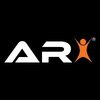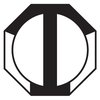
i
Falcon
Autotech
Filter interviews by
Falcon Autotech Interview Questions and Answers
22 Interview questions
Sorting technology and conveyor automation streamline material handling, enhancing efficiency in logistics and manufacturing processes.
Sorting technology categorizes items based on predefined criteria, such as size, weight, or destination.
Conveyor automation involves systems that transport materials efficiently, reducing manual labor and increasing throughput.
Examples of sorting technology include barcode scanners...
Transformers work on the principle of electromagnetic induction to transfer electrical energy between two or more circuits.
Transformers have two coils of wire, known as the primary and secondary coils.
When an alternating current flows through the primary coil, it creates a changing magnetic field.
This changing magnetic field induces a voltage in the secondary coil, transferring electrical energy.
The ratio of the n...
Conveyor start stop and cascade logic involves programming the sequence of starting and stopping multiple conveyors in a specific order.
Use PLC programming to control the start and stop sequence of conveyors
Implement interlocking logic to ensure safe operation of conveyors
Utilize sensors to detect the presence of objects on the conveyor for automatic start/stop
Create a cascade logic to ensure smooth transition bet...
To finish a project within customer requirements, it is important to clearly understand the requirements, communicate effectively with the customer, prioritize tasks, and regularly update the customer on progress.
Understand the customer's requirements thoroughly
Communicate effectively with the customer to clarify any doubts or changes in requirements
Prioritize tasks based on customer priorities and deadlines
Regula...
The amount of current that a 1mm2 wire can carry depends on various factors.
The current carrying capacity of a wire depends on its material, temperature, and insulation.
Copper wires typically have a higher current carrying capacity compared to aluminum wires.
The current rating of a wire is usually specified by its manufacturer.
The current carrying capacity can be affected by factors such as wire length and ambient...
Resistivity is a measure of a material's ability to resist the flow of electric current.
Resistivity is the inverse of conductivity.
It is a property of a material that determines how strongly it resists the flow of electric current.
Resistivity is measured in ohm-meters (Ω·m).
Materials with high resistivity, such as rubber or glass, are insulators.
Materials with low resistivity, such as copper or silver, are conduct...
I have extensive experience in machine maintenance and troubleshooting, including working on various types of equipment.
Performed regular maintenance checks on machines to ensure optimal performance
Identified and resolved mechanical issues to minimize downtime
Utilized diagnostic tools and equipment to troubleshoot problems
Collaborated with team members to develop preventive maintenance plans
Trained new employees o...
To check breakdown series by series, follow these steps:
Identify the series of equipment or components that are prone to breakdowns
Record the frequency and duration of each breakdown
Analyze the data to identify patterns or trends
Develop a plan to address the root cause of the breakdowns
Implement the plan and monitor the results
I have 5 years of experience in maintenance.
I have been working in the maintenance field for the past 5 years.
During my previous job, I was responsible for the regular maintenance and troubleshooting of various equipment.
I have gained extensive knowledge and skills in preventive maintenance, equipment repair, and troubleshooting.
I have successfully completed several maintenance projects, ensuring minimal downtime ...
Presenting someone in an interview involves highlighting their strengths, experiences, and suitability for the role effectively.
Start with a brief introduction: 'This is [Name], a dedicated professional with over 5 years of experience in retail management.'
Highlight key achievements: 'In their previous role, they increased sales by 20% through innovative marketing strategies.'
Mention relevant skills: 'They possess...
Falcon Autotech Interview Experiences
49 interviews found
I appeared for an interview in May 2025, where I was asked the following questions.
- Q1. Ask about Process of the Project management from start to finish
- Q2. Give the current case study on the topic and ask to write on the word file
- Q3. Past experience related to my job responsibilities
Interview Preparation Tips
(2 Questions)
- Q1. Describe designing of Conveyors
- Q2. Iso questions
I applied via Approached by Company and was interviewed in Sep 2024. There was 1 interview round.
(2 Questions)
- Q1. Drawing and bearing about pneumatic cylinder
- Q2. Relative to maintenance
I applied via Naukri.com and was interviewed in Jul 2024. There were 2 interview rounds.
(2 Questions)
- Q1. What is your experience.
- Ans.
I have 5 years of experience working as an Electrical Engineer in the power generation industry.
5 years of experience in power generation industry
Proficient in designing electrical systems
Skilled in troubleshooting and maintenance of electrical equipment
Experience with PLC programming and control systems
Knowledge of industry standards and regulations
- Q2. What is your salary expectation
- Ans.
I am looking for a competitive salary that aligns with my experience and skills in the industry.
Research industry standards for Electrical Engineers in the specific location
Consider years of experience and level of expertise
Factor in benefits and perks offered by the company
Be prepared to negotiate based on the overall compensation package
(2 Questions)
- Q1. Transformers working principle
- Ans.
Transformers work on the principle of electromagnetic induction to transfer electrical energy between two or more circuits.
Transformers have two coils of wire, known as the primary and secondary coils.
When an alternating current flows through the primary coil, it creates a changing magnetic field.
This changing magnetic field induces a voltage in the secondary coil, transferring electrical energy.
The ratio of the number...
- Q2. Different type of sensors
- Ans.
Different types of sensors include temperature sensors, pressure sensors, proximity sensors, motion sensors, and light sensors.
Temperature sensors - measure temperature changes
Pressure sensors - measure pressure changes
Proximity sensors - detect nearby objects without physical contact
Motion sensors - detect movement or changes in position
Light sensors - detect light intensity or brightness
I applied via Naukri.com and was interviewed in May 2024. There were 2 interview rounds.
(2 Questions)
- Q1. Give me your Introduction
- Q2. What is your Job profile
(2 Questions)
- Q1. What is your job profile
- Q2. How you handle the situation
Interview Preparation Tips
- Industrial Automation
- Panels
I applied via Naukri.com and was interviewed in Oct 2024. There were 2 interview rounds.
(1 Question)
- Q1. Basic technique
(1 Question)
- Q1. Salary discussion
(1 Question)
- Q1. Working experience
- Ans.
I have over 8 years of experience in L2 support, specializing in troubleshooting, system maintenance, and customer service.
Managed a team of 5 engineers to resolve escalated technical issues, improving response time by 30%.
Implemented a new ticketing system that streamlined issue tracking and reduced resolution time by 25%.
Conducted training sessions for junior staff on troubleshooting techniques, enhancing team effici...
(2 Questions)
- Q1. Types of equipment work
- Q2. Technical questions on equipment which used in previous working machines
Reasoning and English and mathematics
I applied via Walk-in and was interviewed in Apr 2024. There was 1 interview round.
(2 Questions)
- Q1. Where did you work, and what did you do? How far have you studied?
- Q2. Ask about Excel how to filter. How to apply formulas in Excel.
Interview Preparation Tips
- MS Office
- Q1. Slip gage,bor Gage
- Q2. Tools asked ,Drill Angle
Interview Preparation Tips
I applied via Naukri.com and was interviewed in Feb 2024. There was 1 interview round.
(5 Questions)
- Q1. About education
- Q2. Where you work and what you do
- Q3. Daily work practices
- Ans.
Daily work practices involve following standard operating procedures, prioritizing tasks, communicating effectively, and providing excellent customer service.
Follow standard operating procedures to ensure consistency and efficiency in resolving technical issues
Prioritize tasks based on urgency and impact on customers
Communicate effectively with team members and customers to provide updates and gather necessary informat...
- Q4. Equipments under management
- Q5. Kpi and efficiency of work
- Ans.
KPIs are key performance indicators used to measure the success of a support technician's work. Efficiency is crucial for meeting KPIs and ensuring timely resolution of issues.
KPIs should be specific, measurable, achievable, relevant, and time-bound (SMART)
Efficiency can be improved through proper time management, prioritization of tasks, and effective communication with team members and customers
Examples of KPIs for s...
Interview Preparation Tips
Top trending discussions






Falcon Autotech Interview FAQs
The duration of Falcon Autotech interview process can vary, but typically it takes about less than 2 weeks to complete.
Tell us how to improve this page.
Falcon Autotech Interviews By Designations
- Falcon Autotech Technical Support Engineer Interview Questions
- Falcon Autotech Engineer Interview Questions
- Falcon Autotech Senior Engineer Interview Questions
- Falcon Autotech Assistant Manager Interview Questions
- Falcon Autotech Installation Engineer Interview Questions
- Falcon Autotech Support Engineer Interview Questions
- Falcon Autotech Electrical Design Engineer Interview Questions
- Falcon Autotech Deputy Manager Interview Questions
- Show more
Interview Questions for Popular Designations
- Senior Executive Interview Questions
- Team Lead Interview Questions
- Software Developer Interview Questions
- Business Analyst Interview Questions
- Sales Executive Interview Questions
- Consultant Interview Questions
- Graduate Engineer Trainee (Get) Interview Questions
- Java Developer Interview Questions
- Show more
Overall Interview Experience Rating
based on 46 interview experiences
Difficulty level
Duration
Interview Questions from Similar Companies
Falcon Autotech Reviews and Ratings
based on 373 reviews
Rating in categories
|
Engineer
104
salaries
| ₹3.3 L/yr - ₹7.7 L/yr |
|
Senior Engineer
94
salaries
| ₹4.8 L/yr - ₹10.8 L/yr |
|
Assistant Manager
91
salaries
| ₹6 L/yr - ₹13.5 L/yr |
|
Electrical Engineer
54
salaries
| ₹3 L/yr - ₹5.5 L/yr |
|
Project Engineer
53
salaries
| ₹3.9 L/yr - ₹8 L/yr |

Schneider Electric

Honeywell Automation

Rockwell Automation

Wipro PARI
- Home >
- Interviews >
- Falcon Autotech Interview Questions












